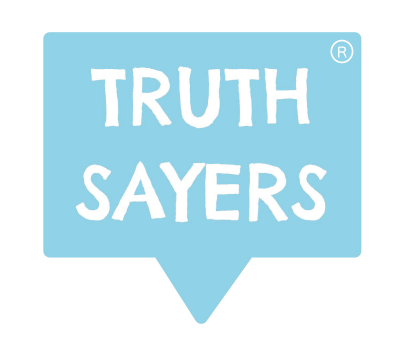Why Neurotech® is the Future of Consumer Research
““… what people state explicitly that they will buy, that they will purchase, that they will eat, is not the same thing as what they actually do in terms of their true day to day behaviour …””
Being able to understand how people feel about the products they buy is key to understanding consumer behaviour. Neurotech® has the power to capture these emotive factors and turn them into actionable data. Students at the University of Reading have been experiencing this first hand, gathering unique insights into how we purchase food.
Our Head of Content, Cheryl Stapleton chatted to Professor Lisa Methven, Professor and Director of the FoodBioSystems DTP at University of Reading about our collaborative research project that used Neurotech® to gather emotional responses from consumers to analyse choices and trends.
Transcript:
Over the past few months, Truthsayers® has been collaborating with the Food & Sensory Science department at the University of Reading, on a specific research project looking at food preferences and consumer responses. The research tools used by the department are normally traditional-style, explicit surveys where consumers are asked to think about and share their food preferences, but this time, thanks to our Neurotech® system, students were able to also capture the gut reactions and true feelings of consumers; without asking consumers any questions, the research team could gather emotional responses that are nearly impossible to capture using explicit methods.
Cheryl Stapleton: I caught up with Professor Lisa Methven, Programme Director for the BSc in Food Science with Business to tell us about the research that the department has been working on with Truthsayers and how our Neurotech® methodology has informed the research.
DrLM: The products that we tested with you were two plant-based meat alternatives, and we also looked at a standard meat product: chicken pieces, and we looked at a standard vegan product in terms of falafels, just so that we had two traditional products and then two of these plant-based alternatives. The responses that I have had from our researchers and academics in the group afterwards was “Wow. This is exciting. I can see how I’m going to use this in my research,” they could see it immediately, of course, because they normally run explicit tests a lot. And not surprisingly, the differences between the implicit and explicit responses were more with the plant-based meat alternatives – really different responses between the implicit and explicit; it was so clear. So that’s led to some interesting questions from the students as to why might we have those differences in implicit and explicit responses and interested to learn more about how they’re actually going to, first of all, use the data, but really, what we want them to get to is to think about how they would use the tools going forward – what would they do next? When they step out from the University of Reading into their careers, then how would they then start to consider using these tools?
CS: Implicit and Explicit reactions are formed out of two different processes that occur in our mind: System 1 is our automatic, intuitive thinking mode that happens at a nonconscious level, and System 2 is a slower, more analytical thinking mode. The science behind Neurotech® measures implicit reactions. These are our gut responses, that are emotionally driven and honest; these responses reveal our genuine feelings, unfiltered by conscious bias. The System 2 process is where explicit responses are formed; responses that are considered and subject to conscious bias. Traditional surveys and questionnaires typically require the use of System 2 thinking.
How do System 1 and System 2 thinking come into play when we’re talking about consumer choices that we make every day? And how is the sensory and consumer food market currently measuring these responses?
DrLM: So we recognise that when we’re making a decision, it may be a fast intuitive system 1 response whenever possible, but obviously it may also be a considered system 2 response where you’re putting more cognitive effort into that response. Now both systems we think are probably at play with food products, and so quite often the daily things that you do and the way that you go round a UK supermarket, or shop online, with the thousands of opportunities of products that are there, you’re obviously going to apply system 1, a lot of the time. It doesn’t mean that you’re always going to though, because obviously to get a food product into your repertoire in the first place, you may have thought more explicitly about why you’re doing that, in which case system two is actually also at play.
So, although the sensory & consumer field is trying to stretch beyond liking and purchase intent, it is still often using the same type of questioning, which is explicit questioning and therefore what we tend to find, is that if you ask, for example, emotional sorts of questions around food products, quite often those responses will mirror the explicit liking response, and it’s not so surprising is it: If you’re asked explicitly whether you like something and then you’re asked to also score emotional terms for it, including things like happy or aggressive, you’re more likely to pick the happy and less likely to pick the aggressive and guilty to go with the fact that you’ve just said you like the product so often you’ve got this halo effect.
So what we need to understand really, I guess, is where those two systems are having an effect on your purchasing and having an effect on what you’re consuming, and therefore then trying to use the appropriate tools to completely understand the whole picture in terms of food purchases, food liking and food consumption.
CS: It seems that the only form of survey or assessment tool that’s currently being used in this type of research is based on explicit questioning, where answers are always subject to conscious bias and it’s very hard to get a true measure of consumer feelings.
I’m interested to know – what other benefits have you found, or could you foresee in using Truthsayers’ Neurotech® system?
DrLM: If you look at something like response to foods while you undergoing treatment for cancer – we have a real challenge there where quite often it’s very difficult to access people to actually come on board and be able to work with us, so often, our numbers are really small and so not only are we reliant on explicit methods which are perhaps missing some information that we want, but also those explicit tools normally require us to have quite a lot of people, and that’s another challenge for us when we are looking at products that we’re developing for groups such as cancer patients, and actually maybe that’s a way of us achieving two things there – being able to run tests with enough people that we can see the results are stable but not necessarily needing many hundreds of people to take part, and also get into the underlying issues and actually trying to access the information that you implicitly feel is probably again quite different from explicit response, and again this is an area research that we see as very important and that we’re involved in as well.
CS: Going forward, how important do you think implicit testing is going to be in tackling the range of challenges that are being faced by the sensory and consumer food market?
DrLM: There’s so many challenges that we have, around environmental challenges and climate change, and around nutrition, particularly in terms of metabolic syndrome. That’s quite a lot of new challenges ahead, and if we just stick with the tools that we normally use, our explicit testing tools, I believe we’re probably not going to be able to address those challenges, because what people state explicitly that they will buy, that they will purchase, that they will eat, is not the same thing as what they actually do in terms of their true day to day behaviour. So we know that, but it’s trying to look at tools that can access that information differently – access implicit reactions rather than explicit reactions.
Did you miss our previous blog about this research with the University of Reading? Read it here


